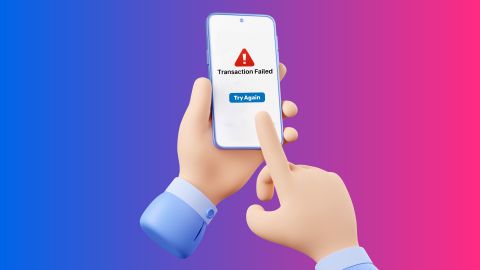In this article you will discover how HVDC technology, or High Voltage Direct Current systems, enhances power transmission efficiency and reduces energy loss over long distances.
Comprehensive guide to HVDC (High Voltage Direct Current) systems
-
High-Voltage Direct Current (HVDC) systems are advanced technologies for transmitting electricity over long distances efficiently. Unlike traditional AC systems, HVDC uses direct current to minimise power losses, making it ideal for bulk power transmission. These systems are particularly beneficial in connecting remote renewable energy sources, such as offshore wind farms, to urban centres. HVDC technology supports reliable grid integration and plays a significant role in modernising power systems for sustainability and efficiency. Its growing adoption reflects its importance in meeting global energy demands and reducing environmental impact.
HVDC systems are revolutionizing electricity transmission with efficiency and minimal losses, ensuring reliable power delivery across vast distances. Similarly, Bajaj Pay on Bajaj Finserv’s BBPS ensures seamless electricity bill payments, keeping your power supply uninterrupted. Just as HVDC optimizes energy flow, Bajaj Pay optimizes your billing experience—quick, efficient, and hassle-free!How HVDC works
HVDC systems convert alternating current (AC) from power plants into direct current (DC) for efficient transmission over long distances. This process occurs in converter stations using rectifiers. At the receiving end, inverters convert DC back into AC for distribution to consumers. The system uses high-voltage cables or overhead lines to reduce resistance losses. HVDC’s ability to interconnect grids with different frequencies or operating conditions makes it a versatile solution for complex energy networks.Advantages of HVDC systems
HVDC technology offers several benefits that make it a preferred choice for modern power systems:- Reduced transmission losses: HVDC significantly minimises energy loss over long distances compared to AC systems.
- Long-Distance capability: It efficiently transmits electricity across thousands of kilometres, including underwater.
- Grid stability: HVDC interconnects asynchronous grids, enhancing grid stability and reliability.
- Cost-Effectiveness: Although initial installation costs are high, operational savings outweigh the investment.
- Environmental benefits: Fewer overhead lines and reduced energy losses contribute to a lower environmental footprint.
- Renewable energy integration: HVDC is ideal for transmitting power from remote renewable sources to urban areas.
Applications of HVDC systems
Application Description Long-Distance transmission HVDC efficiently transmits electricity across large distances with minimal losses. Underwater cables Used in submarine power cables for offshore wind farms or intercontinental power links. Grid interconnection Connects asynchronous or separate power grids for enhanced energy sharing and stability. Renewable energy integration Transmits power from remote solar or wind farms to urban centres. Urban Power supply Delivers high volumes of electricity to densely populated metropolitan areas. Industrial applications Supplies direct current for industries requiring stable and large-scale power supplies. Types of HVDC systems
Monopolar HVDC system:- Transmits power through a single conductor, with the earth or seawater as a return path.
- Uses two conductors with opposite polarities, improving reliability and reducing transmission losses.
- Interconnects two AC systems without requiring a transmission line.
- Connects multiple points of power generation and consumption in a single HVDC network.
- Allows efficient integration of renewable energy sources and provides better control over power flow.
Components of HVDC systems
- Converter stations: Convert AC to DC and vice versa using rectifiers and inverters.
- Transmission lines: High-voltage cables or overhead lines that carry DC electricity.
- Transformers: Adjust voltage levels for efficient power transmission.
- Filters: Minimise harmonics and improve power quality.
- Cooling systems: Maintain operational temperatures for HVDC equipment.
- Control systems: Monitor and regulate HVDC operations for stability and efficiency.
Technological developments and innovations in HVDC
- Voltage Source Converters (VSC): Enhance grid flexibility and enable renewable energy integration.
- Ultra-High voltage DC (UHVDC): Transmits electricity at voltages above 800kV for increased capacity.
- Compact converter stations: Reduce land requirements for HVDC infrastructure.
- Advanced insulation materials: Improve system durability and reduce maintenance needs.
- Digital monitoring systems: Ensure real-time monitoring and operational efficiency.
- Eco-Friendly designs: Incorporate environmentally sustainable materials and processes.
Conclusion
HVDC systems are transforming the way electricity is transmitted globally, offering unmatched efficiency, reliability, and environmental benefits. By enabling long-distance power transmission, grid interconnections, and renewable energy integration, HVDC plays a pivotal role in the energy transition. Continued technological advancements are expected to make HVDC systems even more accessible and sustainable, meeting the evolving demands of modern energy networks.
-
Recharge and Pay Bills
Mobile Prepaid
Mobile Postpaid
Broadband Bill Payment
Electricity Bill Payment
Bajaj Finserv App for All Your Financial Needs and Goals
Trusted by 50 million+ customers in India, Bajaj Finserv App is a one-stop solution for all your financial needs and goals.
You can use the Bajaj Finserv App to:
You can use the Bajaj Finserv App to:
- Apply for loans online, such as Instant Personal Loan, Home Loan, Business Loan, Gold Loan, and more.
- Explore and apply for co-branded credit cards online.
- Invest in fixed deposits and mutual funds on the app.
- Choose from multiple insurance for your health, motor and even pocket insurance, from various insurance providers.
- Pay and manage your bills and recharges using the BBPS platform. Use Bajaj Pay and Bajaj Wallet for quick and simple money transfers and transactions.
- Apply for Insta EMI Card and get a pre-approved limit on the app. Explore over 1 million products on the app that can be purchased from a partner store on Easy EMIs.
- Shop from over 100+ brand partners that offer a diverse range of products and services.
- Use specialised tools like EMI calculators, SIP Calculators
- Check your credit score, download loan statements and even get quick customer support—all on the app.
Frequently asked questions
What is HVDC?
HVDC stands for High Voltage Direct Current, used for efficient long-distance electricity transmission.
How does HVDC differ from AC transmission?
HVDC minimises power losses and is more efficient for long-distance and underwater transmissions.
What are the main components of an HVDC system?
Key components include converter stations, transmission lines, transformers, filters, and control systems.
Where is HVDC most commonly used?
It is used in long-distance power transmission, grid interconnections, and renewable energy integration.
What are the types of HVDC systems?
Types include monopolar, bipolar, back-to-back, multi-terminal, and VSC HVDC systems.
Show More
Show Less




